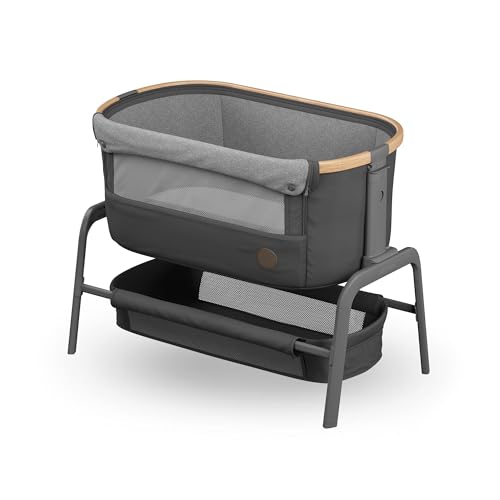The Benefits of Using a Bedside Cot for Nursing: A Comprehensive Guide
Recently, the idea of co-sleeping, especially using bedside cots, has gotten much attention amongst new parents and caregivers. A bedside cot is a type of baby bed that is developed to safely attach to the side of an adult bed, providing a safe sleeping environment for infants while promoting ease of access for breastfeeding mothers. This article will explore the different benefits of bedside cots for nursing, various types readily available, factors to consider for choosing one, and often asked concerns.
The Advantages of Bedside Cots for Nursing
1. Enhanced Accessibility
One of the most substantial advantages of a bedside cot is the ease of access it provides. Nursing moms can merely reach over to select up their baby without the requirement to stand up or move away from bed. This benefit enables:
- Quick night feedings
- Increased comfort for the mom
- Decreased risk of disruptions to both mom and baby during nighttime care
2. Promotes Bonding
Nursing is more than just a means of nourishment; it is likewise an opportunity for moms to bond with their infants. A bedside cot facilitates this connection by allowing moms to preserve close proximity to their babies during sleep. This closeness can lead to:
- Enhanced psychological connection
- Increased milk production due to regular nursing
- A complacency for the infant
3. Motivates Extended Breastfeeding
The benefit of having a bedside cot motivates longer breastfeeding periods. Moms are most likely to follow their baby's feeding cues and respond quickly when they can easily access their kid. The advantages of prolonged breastfeeding consist of:
- Improved nutritional intake for the baby
- Boosted developmental advantages
- Reinforced resistances through breast milk
4. Supports Safe Sleep Practices
Bedside cots are created with safety in mind, allowing parents to maintain close supervision over their sleeping infant. By adhering to safe sleep recommendations-- such as placing the baby on their back to sleep and guaranteeing a company bed mattress-- parents can produce a safer environment. Functions that add to security might include:
- Breathable sides to avoid suffocation
- Tough, non-toxic products
- Adjustable heights to match the adult bed
5. Flexible Use
A bedside cot can act as both a crib and a co-sleeping arrangement. Many designs are adjustable in height or can be completely removed for use as a standalone crib when the kid grows older. This adaptability provides long-term use and value.
Types of Bedside Cots
Bedside cots are available in different styles and designs. Below are some typical types:
| Type | Description |
|---|---|
| Co-Sleeping Cribs | Full-sized cribs that can be safely connected to the side of the parents' bed. |
| Bassinet-style Cots | Smaller, portable cots that fit next to the bed and are light-weight for easy transport. |
| Convertible Baby Beds | Cots that change into various types of beds as the child grows, frequently consisting of young child and youth bed alternatives. |
| Foldable Playards | These can be utilized as both a sleep location and a play area, easily saved when not in use. |
Factors to consider When Choosing a Bedside Cot
When picking a bedside cot, parents should think about several essential elements:
Safety Features
- Try to find mesh sides for ventilation.
- Ensure that the cot satisfies safety standards and regulations.
Relieve of Use
- Examine for adjustable height settings to line up with your bed.
- Consider how easily the cot can be moved if required.
Size and Space
- Make certain there is enough space in the bedroom for the cot.
- Select a crib that fits easily without taking excessive room.
Portability
- If travel is frequent, think about a light-weight model that can be easily folded and carried.
Sturdiness and Material
- Select top quality materials that use sturdiness and are easy to tidy.
Regularly Asked Questions
1. Are bedside cots safe for sleeping?
Yes, when used properly and following safety standards, bedside cots are usually safe for infants to sleep in. Always guarantee that Cots 4 Tots is firmly connected to the adult bed and that there are no spaces.
2. Can I use a bedside cot for a newborn?
A lot of bedside cots are created for newborns and can accommodate them safely. Constantly inspect the producer's suggestions for weight limitations and age viability.
3. How can I guarantee my baby's safety while utilizing a bedside cot?
To make sure safety, constantly put your baby on their back to sleep and frequently examine that the cot is safely connected to your bed. Keep a clutter-free sleeping environment.
4. When should I shift my baby from a bedside cot to a crib?
Repeatedly, parents shift their kid to a crib when they are around 4 to 6 months old or when they begin to roll over often. However, the specific timing depends upon the baby's development.
5. Can I use a bedside cot for multiple babies?
Bedside cots are usually designed for single infants. If parents have twins or multiples, it's suggested to use separate sleeping arrangements to make sure security.
Bedside cots use lots of advantages for nursing moms, including availability, safety, and promoting a strong bond in between mom and child. By picking the best kind of bedside cot and considering security functions, parents can produce a nurturing environment for their infants. As the pattern of co-sleeping continues to increase, providing a safe and soothing setup is essential for the wellness of both baby and caregiver. With the best information and resources, parents can browse this new chapter in their lives much better ready than ever.

